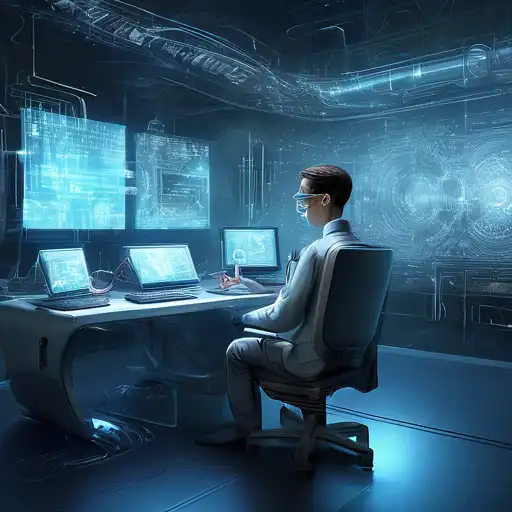Introduction to Computer Vision Technology
Computer vision technology has undergone significant transformations over the past few years, becoming a cornerstone in the development of artificial intelligence (AI) and machine learning (ML) applications. This technology enables machines to interpret and understand the visual world, mimicking human vision but at a scale and speed that is unimaginable for humans.
Recent Breakthroughs in Computer Vision
The field of computer vision has seen remarkable advancements, thanks to the integration of deep learning algorithms. These breakthroughs have not only improved accuracy but also expanded the applications of computer vision across various industries. From autonomous vehicles to healthcare diagnostics, the potential is limitless.
Deep Learning and Neural Networks
At the heart of these advancements are deep learning and convolutional neural networks (CNNs), which have significantly enhanced the ability of machines to recognize patterns and objects in images and videos. This has opened up new possibilities for real-time image processing and analysis.
3D Image Recognition
Another notable advancement is in 3D image recognition, allowing for more detailed and accurate interpretations of the physical world. This is particularly useful in fields such as robotics and augmented reality (AR), where understanding depth and spatial relationships is crucial.
Applications of Advanced Computer Vision
The applications of computer vision technology are vast and varied. Below are some of the most impactful uses today:
- Autonomous Vehicles: Computer vision is critical for the development of self-driving cars, enabling them to navigate safely by recognizing traffic signs, pedestrians, and other vehicles.
- Healthcare: From diagnosing diseases through medical imaging to assisting in surgeries, computer vision is revolutionizing healthcare.
- Retail: Automated checkout systems and inventory management are just a few ways computer vision is transforming the retail industry.
- Security and Surveillance: Enhanced facial recognition and anomaly detection capabilities are improving security measures worldwide.
Challenges and Future Directions
Despite its advancements, computer vision technology faces challenges such as privacy concerns, the need for large datasets, and the risk of bias in AI models. Addressing these issues is crucial for the sustainable development of this technology.
Looking ahead, the integration of computer vision with other technologies like the Internet of Things (IoT) and 5G networks promises to unlock even more innovative applications. The future of computer vision is not just about seeing but understanding and interacting with the world in ways we are just beginning to imagine.
Conclusion
The advancements in computer vision technology are paving the way for a future where machines can see and interpret the world with human-like accuracy. As we continue to overcome challenges and explore new applications, the potential of computer vision to transform industries and improve lives is undeniable. The journey of innovation in computer vision is far from over, and the possibilities are as vast as our imagination.
